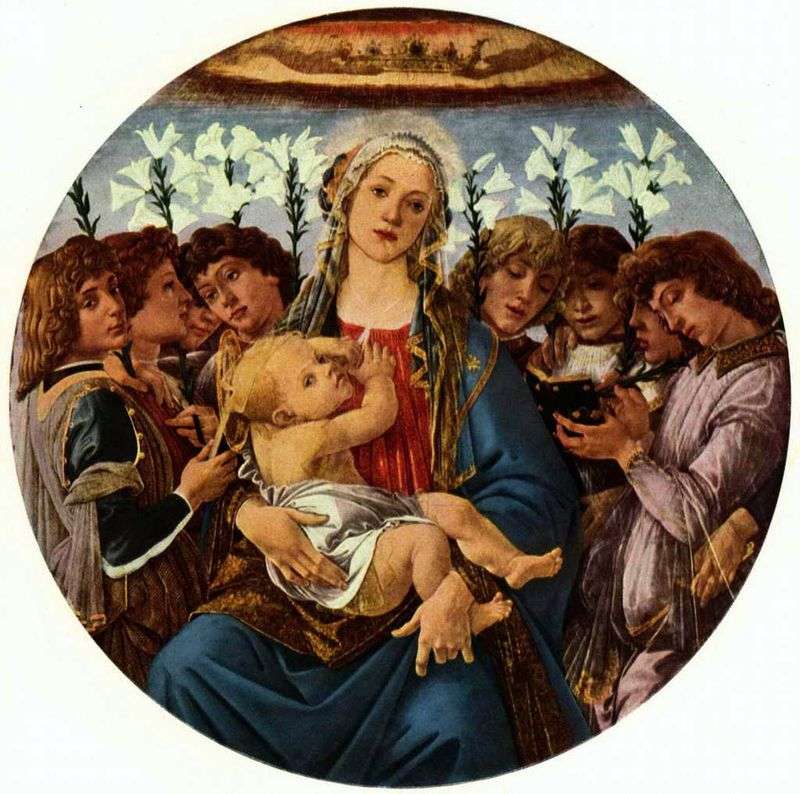
The picture “The Madonna with the Child and the Eight Angels” is also known as the “Rachin Tondo” by the name of the private collection in which it used to be before the Berlin Gallery acquired it at the end of the 19th century.
In the picture symmetrically arranged figures are almost in size; muted paint gives the picture a special charm. In the center is the Mother of God, who is holding the Infant in her hands, who looks at the viewer.
The young Mother is surrounded by eight angels in the form of wingless young men with lilies – a symbol of purity – in their hands. A close group of angels to the right of Mary sing from the book of antiphons, while the group on the left patiently awaits its turn.
Date of this picture is difficult because of the participation in its creation of the pupils of the artist. Apparently Vasari writes about this picture:
“In the church of San Francesco that beyond the gates of San Miniato, there is a tondo with Madonna and several angels in human growth, made by Sandro’s hand and esteemed by the most beautiful work. Sandro was a very pleasant man and often liked to play a trick on his students and friends. So, that when one of his disciples named Biagio performed a tando for sale, exactly the same as the above, Sandro sold him for six florins in gold to one townsman and then, after seeking Biagio, said to him: “Well, I finally sold it this one But you need to beat her tonight higher, then she will look better, and tomorrow morning go to the house of this very citizen and bring him here to see it in good light in its place, and then you’ll count the money. “” Oh, as you well arranged,
The morning came, and then Biagio appeared with the townspeople who bought the painting and knew about the joke. And so, when they entered the workshop, Biagio looked up and saw his Madonna, surrounded not by angels, but by the Florentine Signoria, sitting among these same hoods; he nearly shouted and wanted to ask the buyer for forgiveness, but, seeing that he was silent and even praised the picture, he fell silent. In the end, Biagio left with the townspeople and got six florins for the painting, according to how he bargained with his teacher, when he returned to the workshop, Sandro and Jacopo had just removed the paper hoods, and he saw that his angels were angels, and not townspeople in hoods, and was so amazed that he did not know what to say.
Finally turning to Sandro, he said: “My teacher, I do not really know whether it is a dream or a reality.” These angels, when I came here, had red hoods on their heads, but now they are not, so what does this mean? ” “You’re out of your mind, Biagio,” Sandro replied, “this money drove you crazy.” If that were so, do you really think that a city dweller would have bought a painting? ” “Indeed,” Biagio agreed, “he did not say anything to me, and yet it seemed wonderful to me.” And then all the other apprentices surrounded him and said so much that he decided that they were all crazy. “
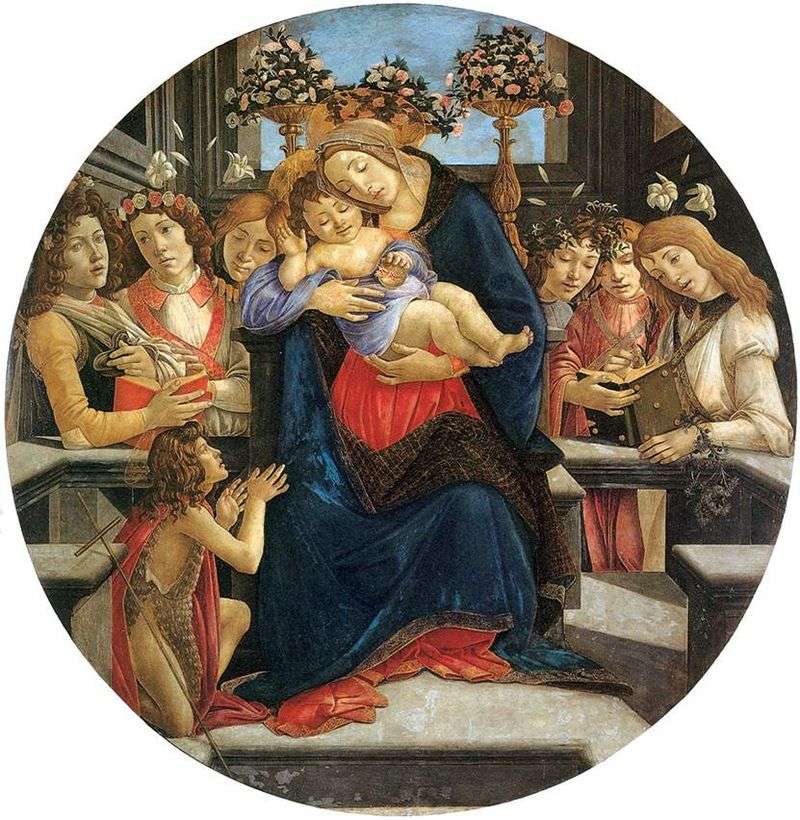 Madonna with Child, Angels and Saint John the Baptist by Sandro Botticelli
Madonna with Child, Angels and Saint John the Baptist by Sandro Botticelli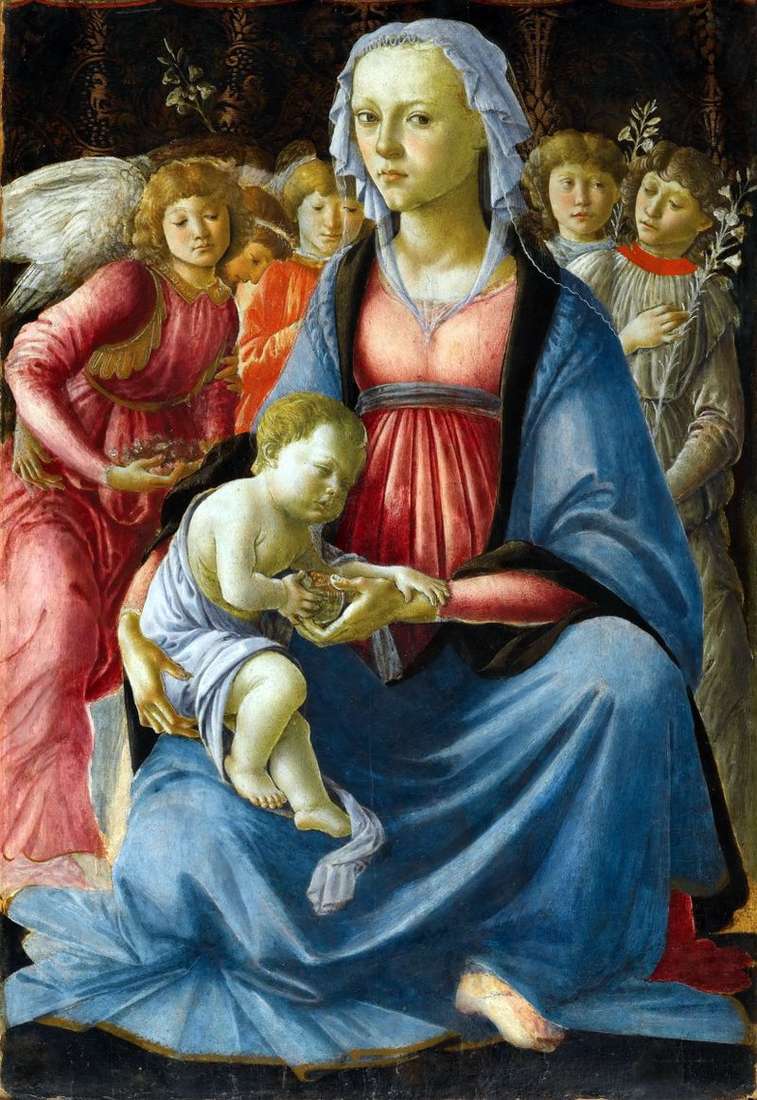 Madonna with the Child and the Five Angels by Sandro Botticelli
Madonna with the Child and the Five Angels by Sandro Botticelli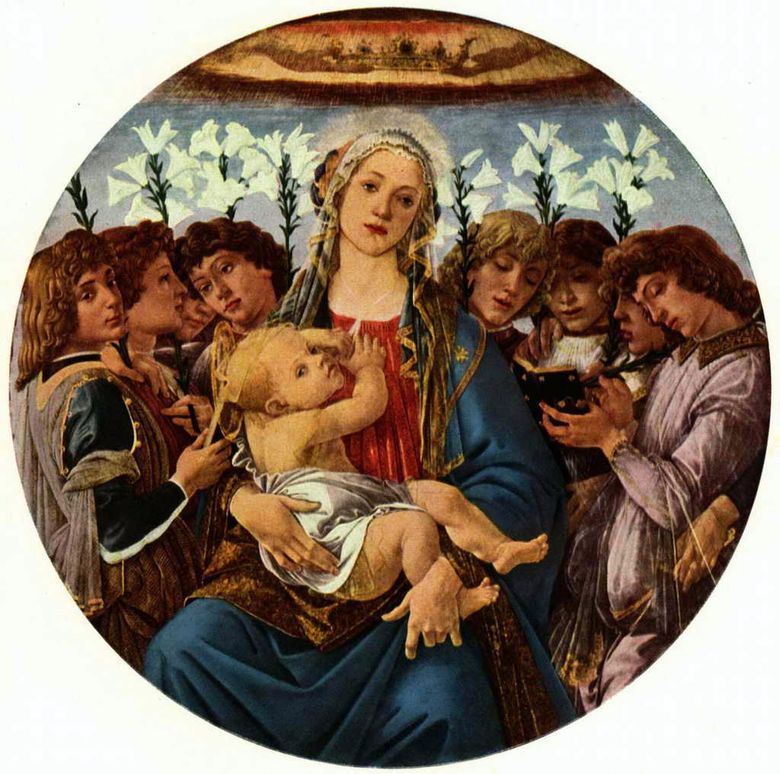 Vierge à l’enfant avec huit anges (Racino Tondo) – Sandro Botticelli
Vierge à l’enfant avec huit anges (Racino Tondo) – Sandro Botticelli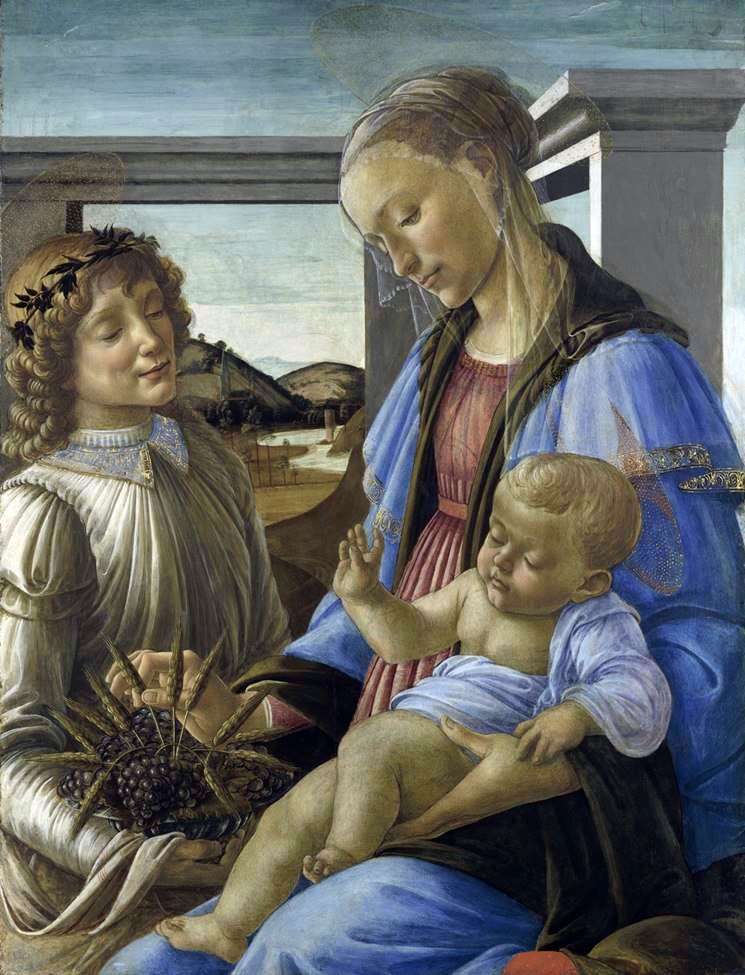 Madonna with Child and Angel (Madonna of the Eucharist) by Sandro Botticelli
Madonna with Child and Angel (Madonna of the Eucharist) by Sandro Botticelli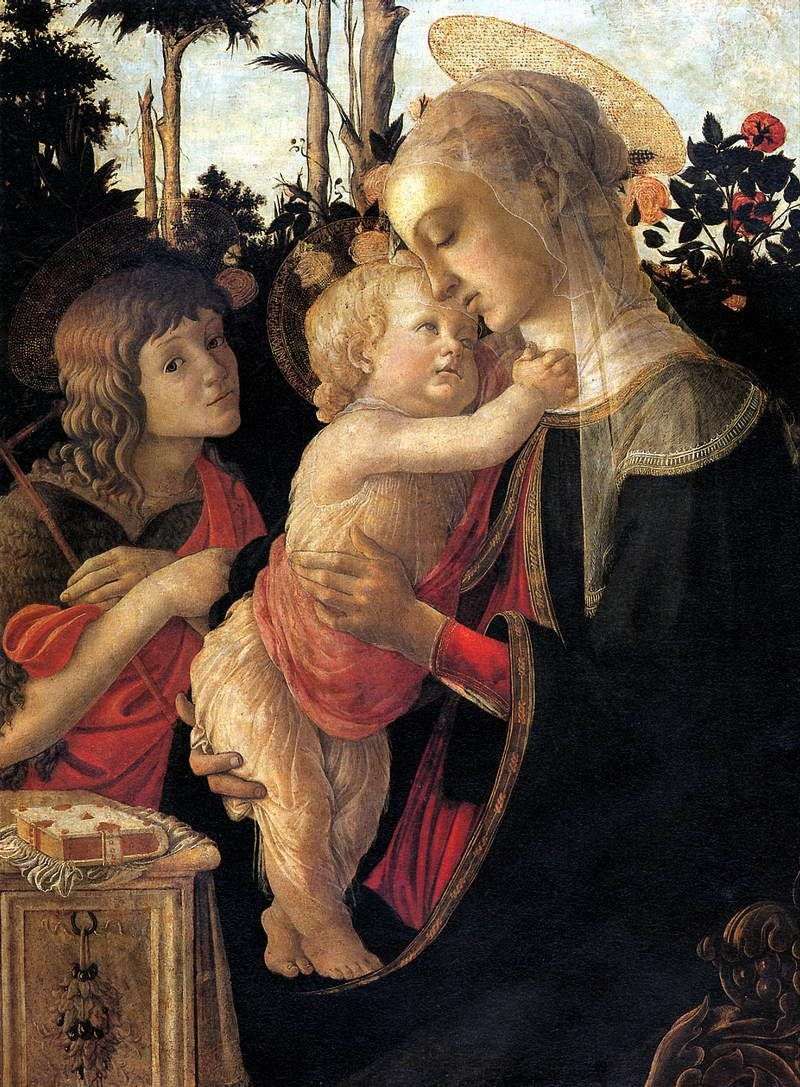 Madonna with the Child and John the Baptist by Sandro Botticelli
Madonna with the Child and John the Baptist by Sandro Botticelli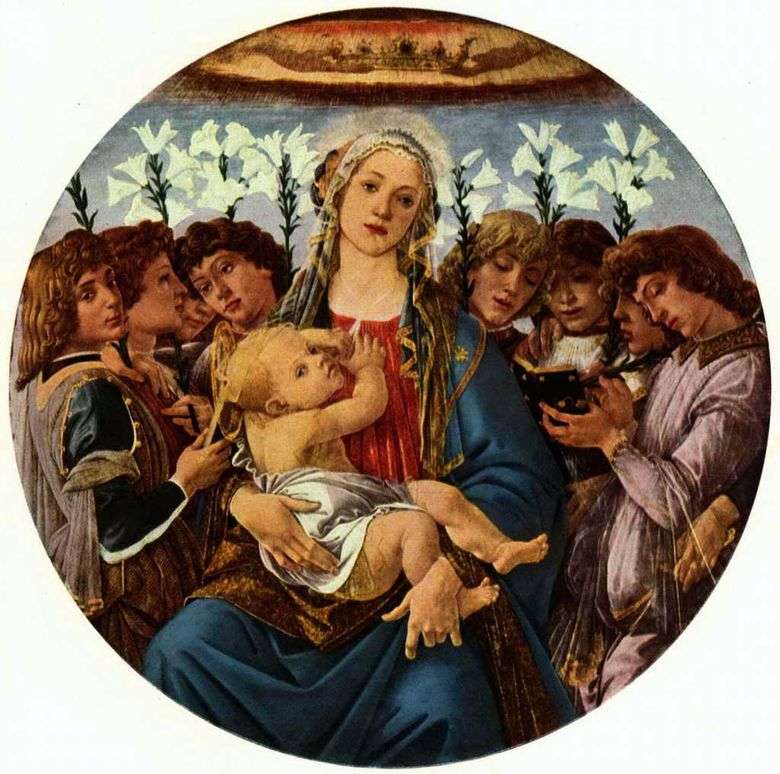 Virgen con niño y ocho ángeles (Raczynské tondo) – Sandro Botticelli
Virgen con niño y ocho ángeles (Raczynské tondo) – Sandro Botticelli Madonna and Child, surrounded by angels, of sv. Roses and St. Catherine by Pietro Perugino
Madonna and Child, surrounded by angels, of sv. Roses and St. Catherine by Pietro Perugino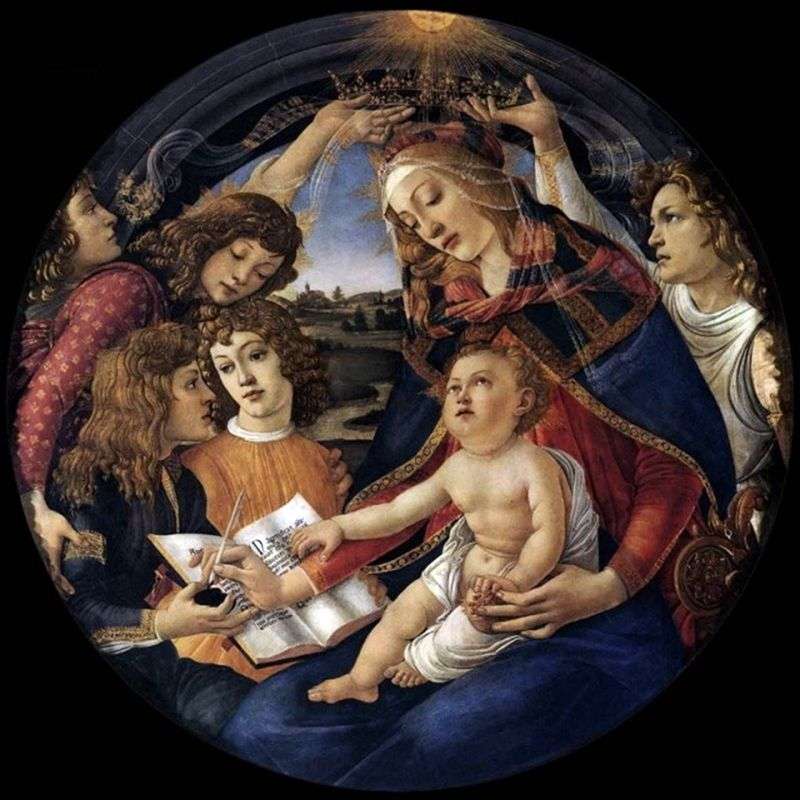 Madonna Magnificat by Sandro Botticelli
Madonna Magnificat by Sandro Botticelli